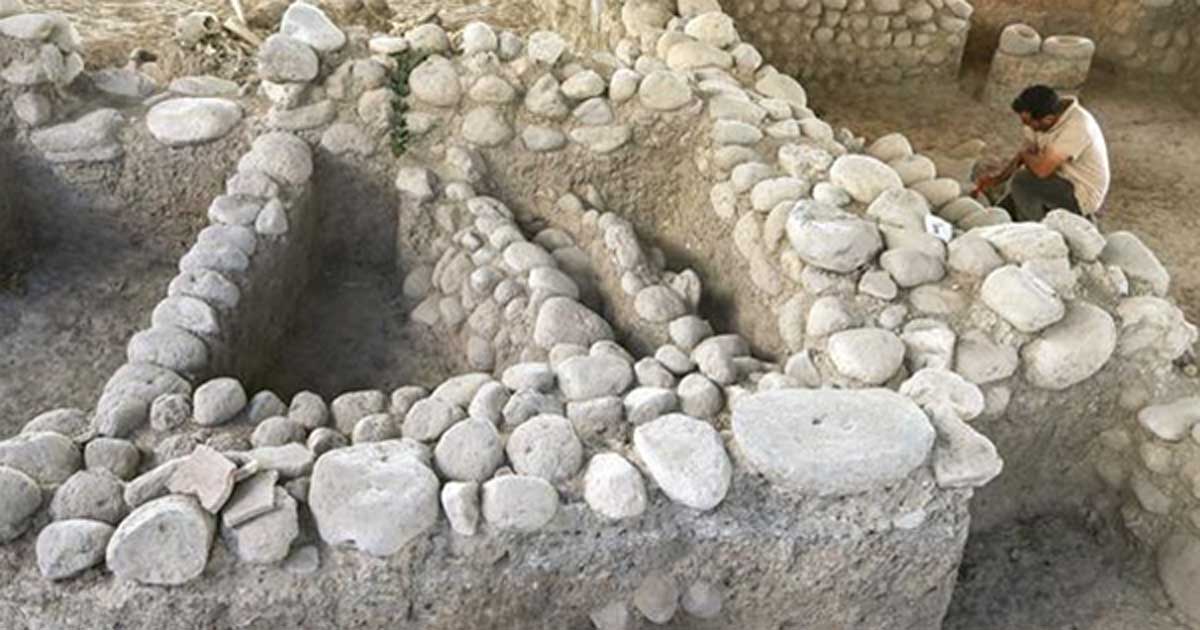Archaeologists Uncover Evidence of Luxurious Lifestyle 5,000 Years Ago in Turkey
Archaeologists excavating in Yassitepe, Turkey for the past seven years have unearthed an ancient Greek settlement consisting of luxurious houses. So far, the findings suggest that luxury life began in Asia Minor almost 5,000 years ago.
Settlement Including Luxurious Residences and High Quality Pottery Discovered in Anatolia
Daily Sabah reports that a team of archaeologists has recently uncovered an ancient settlement consisting of luxurious houses during excavations in Yassıtepe, which is connected to Yeşilova Höyük (settlement mound) in Bornova district of Turkey's western Izmir (Smyrna) province.
Dr. Zafer Derin, director of the excavation committee, mentioned that by examining maps from 1923, his team managed to spot the ancient settlement in the region. Yeşilova Höyük is the first known prehistoric settlement in the Izmir region and excavations started there back in 2010. "We have discovered 10 settlements built on top of one another. The top settlement is from the Trojan period. We can almost say that we are digging up a little Trojan city," Derin tells Daily Sabah. He also added that other findings discovered at the site, such as elegant pottery, clearly show that the settlement’s inhabitants enjoyed a quite rich and luxurious lifestyle. "Luxury life began here 5,000 years ago. The pottery they produced is of extremely high quality," Derin told Daily Sabah.
- Ancient Luxury Outpost with Heated Jacuzzi served Roman Emperor in Bulgaria
- Who Said Ancient People Had it Tough? Luxury Homes and Underfloor Heating Were a Part of Life in the Roman Province of Britannia

Other findings discovered at the site, such as elegant pottery, clearly show that the settlement’s inhabitants enjoyed a quite rich and luxurious lifestyle. (Daily Sabah)
Ancient Greeks Were Known for their Rich and Luxurious Colonies
It’s widely known that the ancient Greeks colonized and inhabited most parts of the Mediterranean Basin and Southern Europe for many centuries. It’s also known that most Greek colonies flourished to the point the citizens there enjoyed a way richer and more luxurious lifestyle than the Greeks who lived in the Greek mainland. Another great example of the luxury Greek colonizers brought to their settlements is Magna Graecia. As we reported in a previous Ancient Origins article, Magna Graecia was the name given in antiquity by the Romans to the group of Greek colonies which encircled the shores of Southern Italy, in the present-day regions of Campania, Apulia, Basilicata, Calabria, and Sicily that were extensively populated by Greek settlers.
A team of archaeologists excavating in the Italian city of Paestum (Poseidonia), recently uncovered the remnants of a palatial structure and indispensable ceramics that also pinpointed the wealth and luxury of the Greek colony during its heyday. The remains of the unearthed large structure, which most likely served as either a palace or a very luxurious household, was probably constructed within the same time period as the Doric-style temples of the Greek gods Athena, Hera, and Poseidon - for which Poseidonia was best known in antiquity.

Second temple of Hera, also called Neptune temple or Poseidon temple, Paestum (Poseidonia), Campania, Italy. (Norbert Nagel/CC BY SA 3.0)
Besides the large building archaeologists also unearthed a respectable amount of Attic red-figure style pottery and other luxury objects at Poseidonia, which clearly show how rich the city’s Greek founders became catering to the travelers and believers who came to worship at the temples. Other finds included vessels used for cooking, eating, and drinking.
- Archaeologists Explore Incredible Ancient City in Supposed Backwater Region of Greece
- Villa de Toralla: Who Lived in This Luxury High-Tech Roman Villa on the Galician Coast?
Houses Were Not Considered Individually
Back to the find in modern-day Turkey, Derin pointed out that the newly discovered houses were not seen individually when the settlements were being constructed, and he suggests that the total space had been designed using an urban planning infrastructure on a single plane, with every house occupying an area of about 80 square meters (861.11 sq. ft.) "The people who lived here stored their grains and liquids both on the ground and under the soil. They took advantage of all possibilities to make life the most convenient and comfortable for them," he tells Daily Sabah.

Example of a Greek Attic Red-Figure Pelike (Storage Vessel). (Public Domain)
Furthermore, excavations also uncovered empty spaces in front of the house foundations, which most likely served as a type of patio for civilians to sit and chat with each other in their free time.
Top Image: Archaeologists excavating in Yassitepe, Turkey have unearthed a Greek settlement consisting of luxurious houses. This suggests that luxury life began in Asia Minor almost 5,000 years ago. Source: Anadolu Agency



















